Yeah, it’s totally a first-world problem: How does one safely pack half a hundred typewriters for moving across the country – but it’s important because we certainly don’t want any of our machines damaged in the trip. 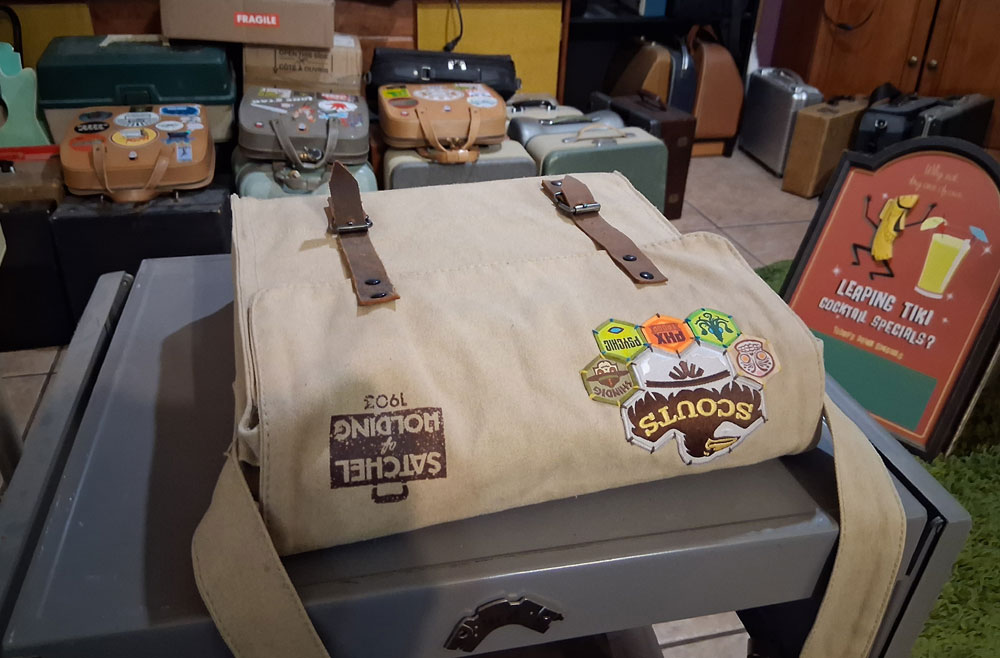 Even machines with form-fitting clamshell lids or are well-packed in padded cases need to be prepared for the shocks of being trucked thousands of miles.
Even machines with form-fitting clamshell lids or are well-packed in padded cases need to be prepared for the shocks of being trucked thousands of miles. 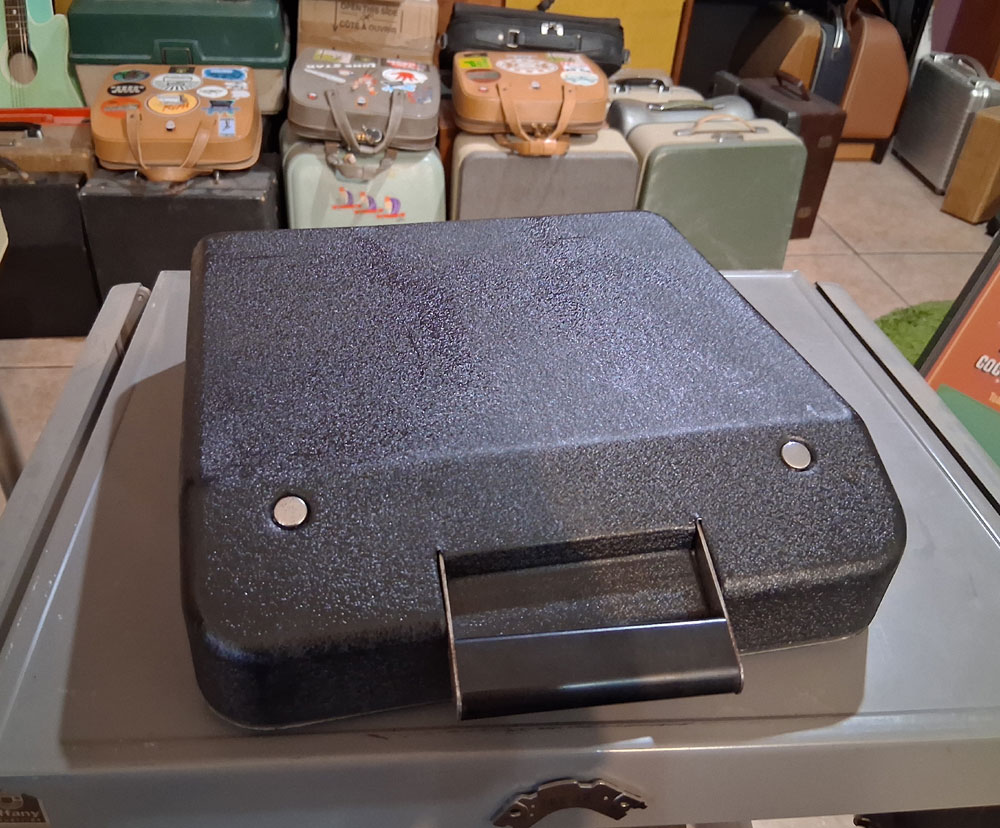 This Empire Aristocrat for instance, has a simple carriage lock and a clamshell that completely immobilizes the carriage. Isn’t that good enough?
This Empire Aristocrat for instance, has a simple carriage lock and a clamshell that completely immobilizes the carriage. Isn’t that good enough? 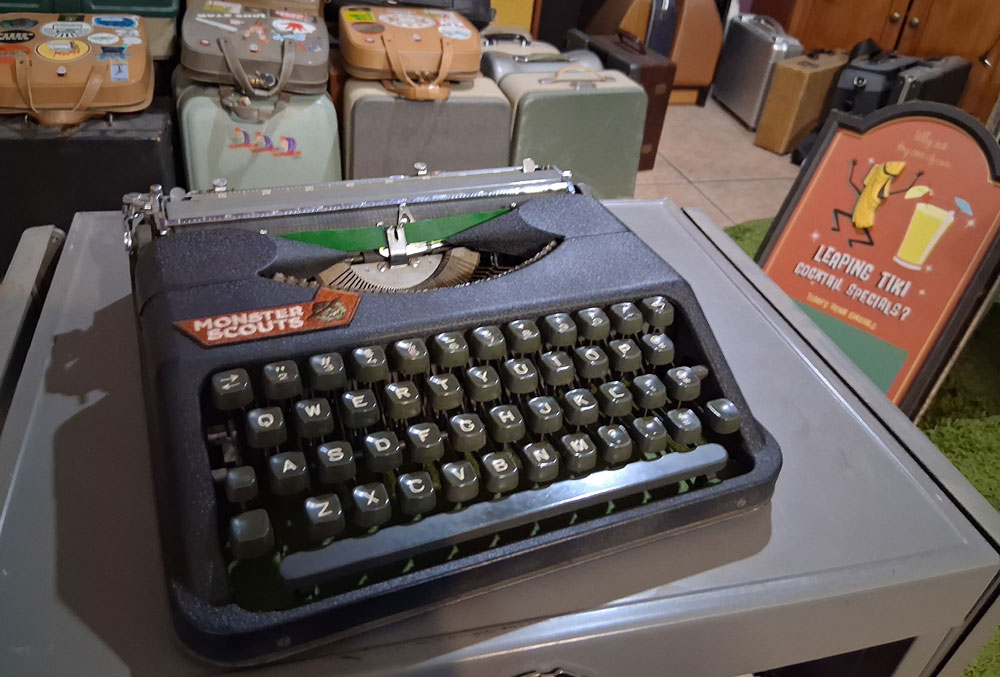 Maybe, but maybe not. Let’s make *sure* it’s safe for travel.
Maybe, but maybe not. Let’s make *sure* it’s safe for travel. 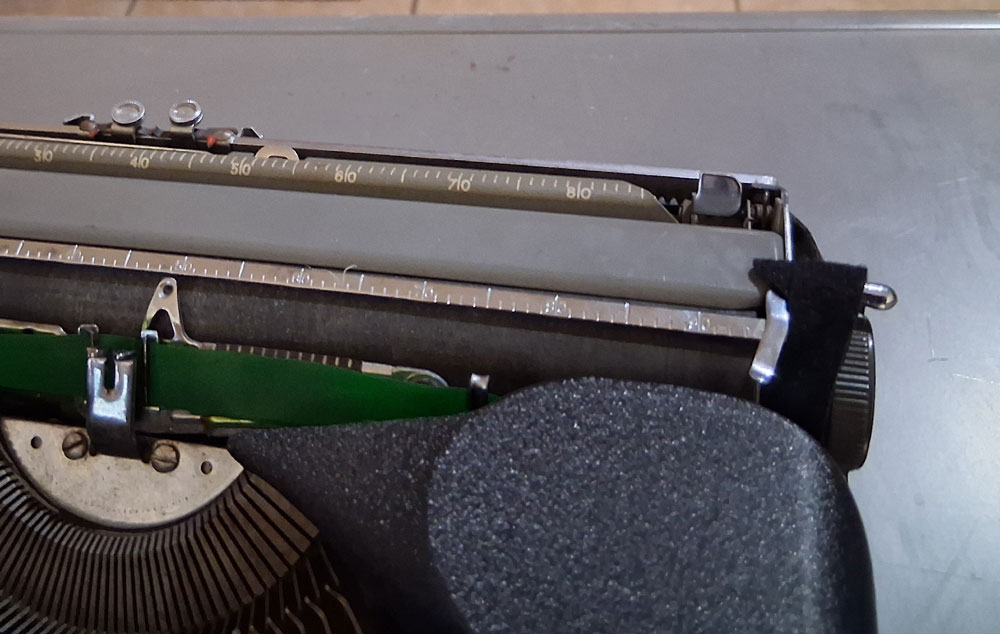 The first thing I do is, while the carriage is locked, I slide the right margin stop all the way over. Simple carriage locks often stop the carriage from moving leftwards, and are unlocked by pulling the carriage rightwards, against the spring motor tension. Sliding the right margin all the way over stops that rightwards movement, keeping the carriage locked even during severe shaking and bumps.The second thing I do is make sure the feed roll tension is released by pulling that lever forward, and then the most important step is to pull the carriage release lever and lock that open by tying it to the platen knob. Velcro ties or rubber bands work fine. These levers work differently on different machines, and sometimes you have to be creative – Groma Kolibri, for instance, have low-profile push-down buttons to release the carriage – impossible to tie down – but you can fold up a postcard and jam it between the left carriage release button and the carriage return lever, and that works great. The reason you want the carriage released and immobile is you don’t want a sharp impact to break off escapement wheel teeth, and releasing the carriage disconnects the rack from the escapement. Not all “carriage locks” actually do this, so hard-wire it yourself for best result.
The first thing I do is, while the carriage is locked, I slide the right margin stop all the way over. Simple carriage locks often stop the carriage from moving leftwards, and are unlocked by pulling the carriage rightwards, against the spring motor tension. Sliding the right margin all the way over stops that rightwards movement, keeping the carriage locked even during severe shaking and bumps.The second thing I do is make sure the feed roll tension is released by pulling that lever forward, and then the most important step is to pull the carriage release lever and lock that open by tying it to the platen knob. Velcro ties or rubber bands work fine. These levers work differently on different machines, and sometimes you have to be creative – Groma Kolibri, for instance, have low-profile push-down buttons to release the carriage – impossible to tie down – but you can fold up a postcard and jam it between the left carriage release button and the carriage return lever, and that works great. The reason you want the carriage released and immobile is you don’t want a sharp impact to break off escapement wheel teeth, and releasing the carriage disconnects the rack from the escapement. Not all “carriage locks” actually do this, so hard-wire it yourself for best result.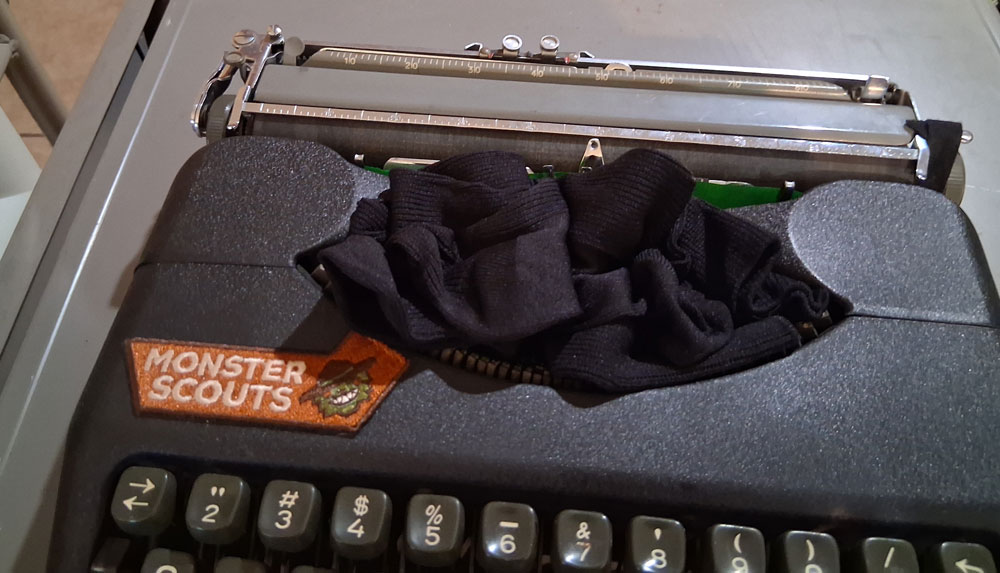 Maybe a bit overkill for a machine with a form-fit case, but stick a sock in the typebasket to keep the typebars from jumping around and maybe getting damaged or bent.
Maybe a bit overkill for a machine with a form-fit case, but stick a sock in the typebasket to keep the typebars from jumping around and maybe getting damaged or bent. 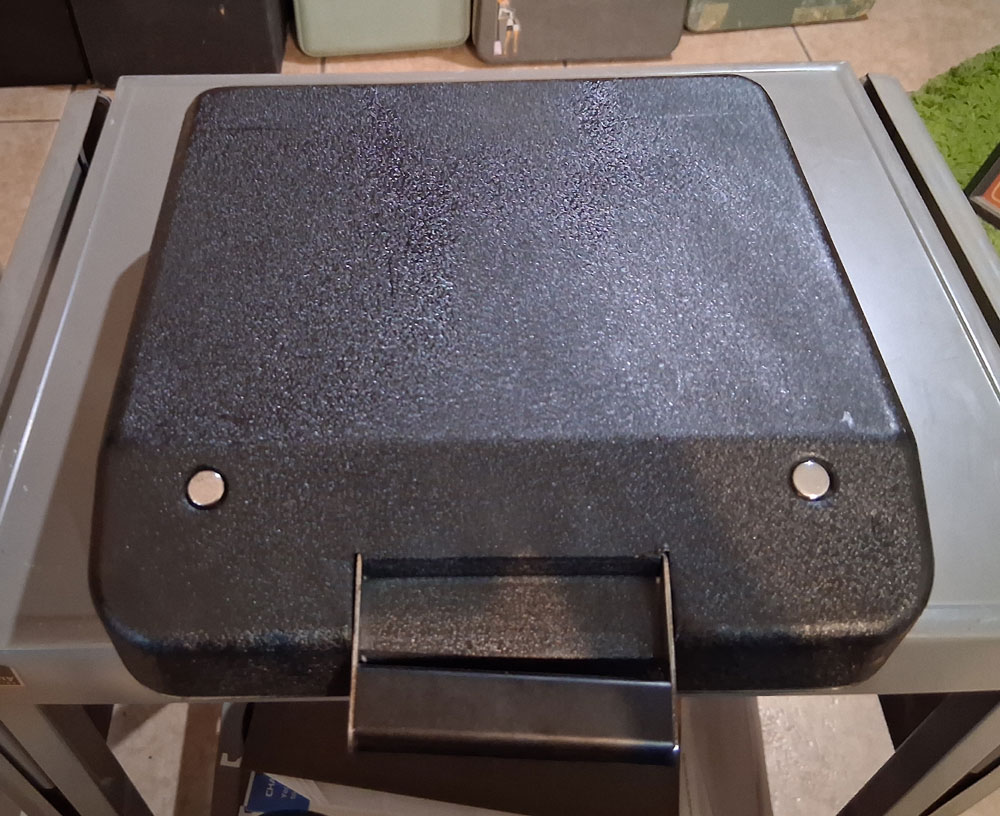 This next one is a special case in a special case. :D My little Underwood 3-Bank Portable, which lives in a heavily-padded booze suitcase. Good enough? Nope!
This next one is a special case in a special case. :D My little Underwood 3-Bank Portable, which lives in a heavily-padded booze suitcase. Good enough? Nope! 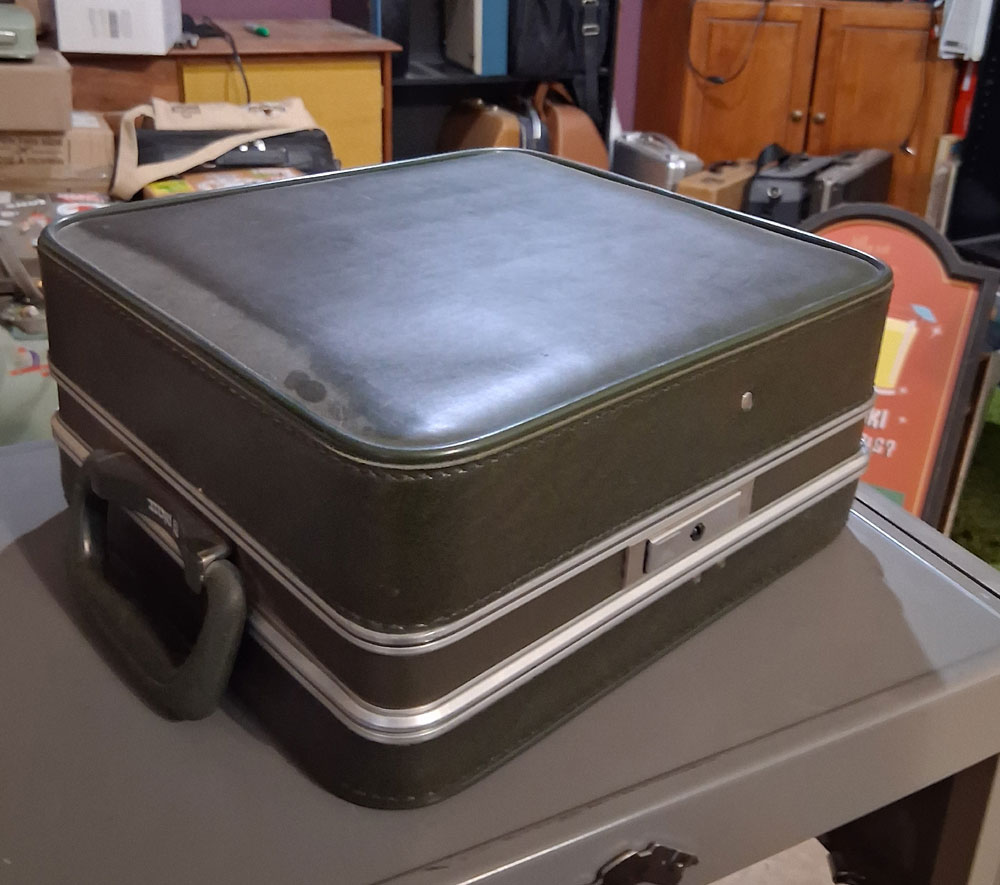 Heavily padded and immobilized as it is, the carriage is still engaged with the escapement and needs to be released. The difficulty is that the carriage release is a push-button type and not so easy to keep released.
Heavily padded and immobilized as it is, the carriage is still engaged with the escapement and needs to be released. The difficulty is that the carriage release is a push-button type and not so easy to keep released. 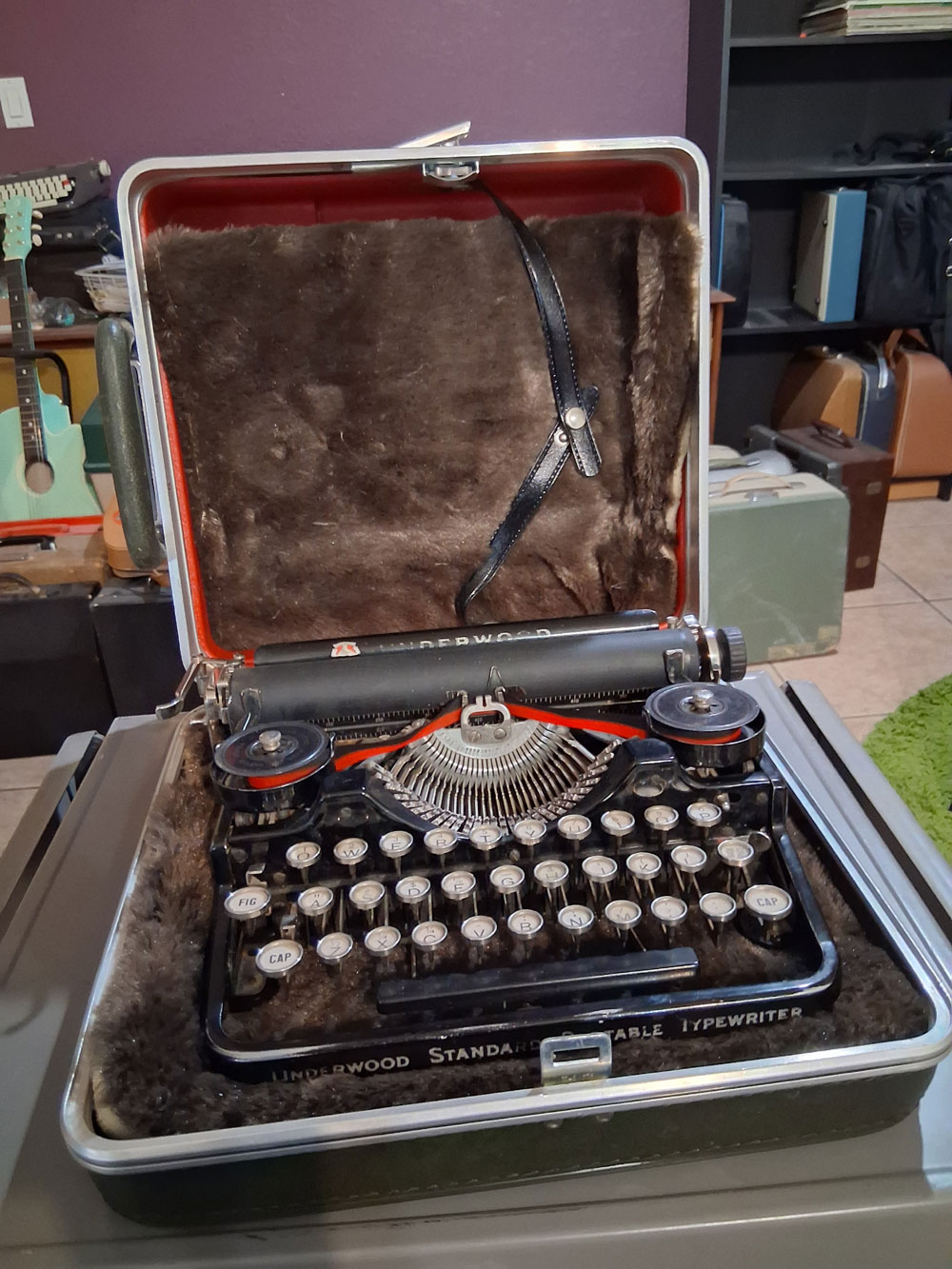 Again, center the margins so the carriage doesn’t move when you engage the carriage release.
Again, center the margins so the carriage doesn’t move when you engage the carriage release. 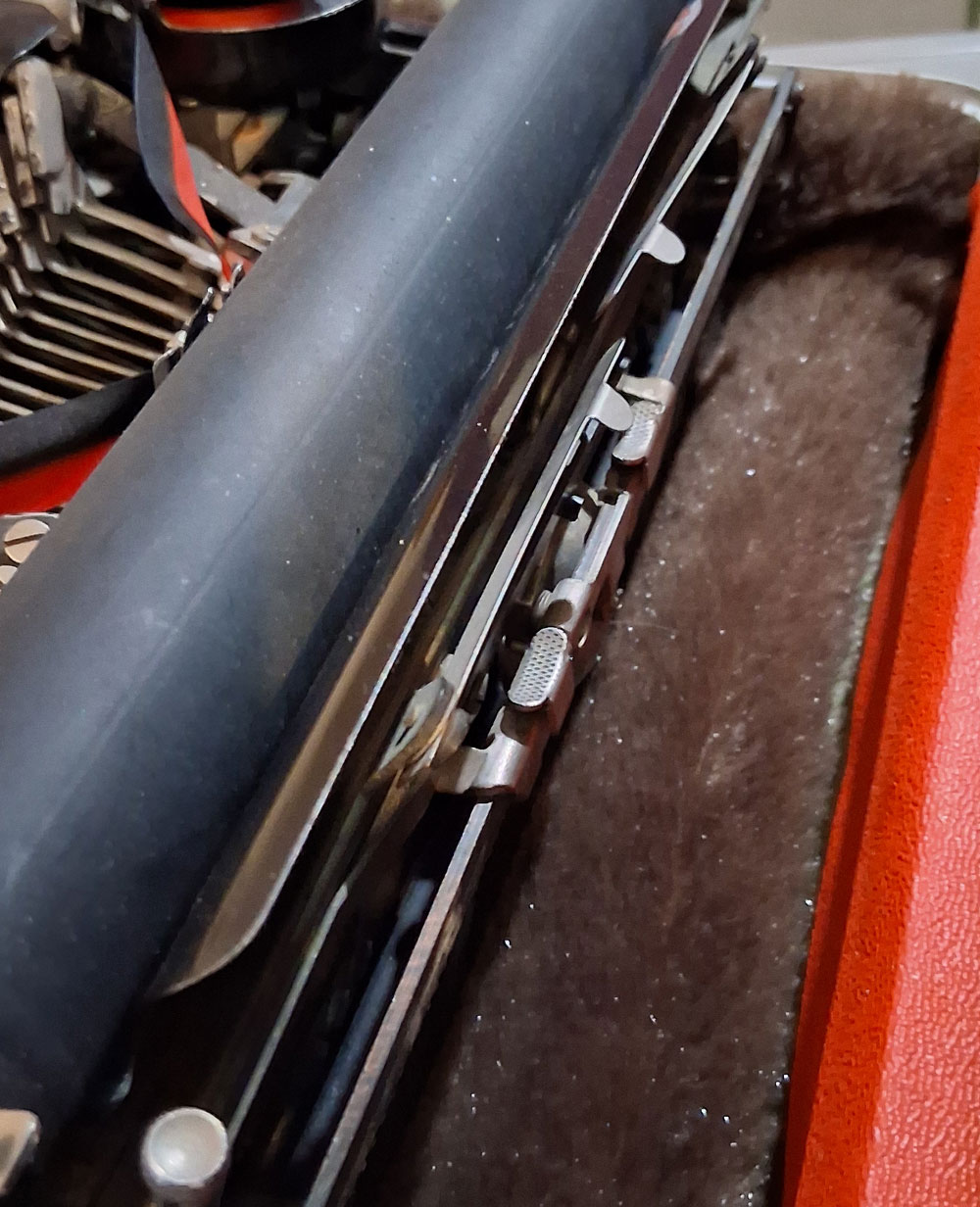 In this particular case, it’s easiest to use a long rubber band and wrap it several times around the release button to keep it disengaged.
In this particular case, it’s easiest to use a long rubber band and wrap it several times around the release button to keep it disengaged. 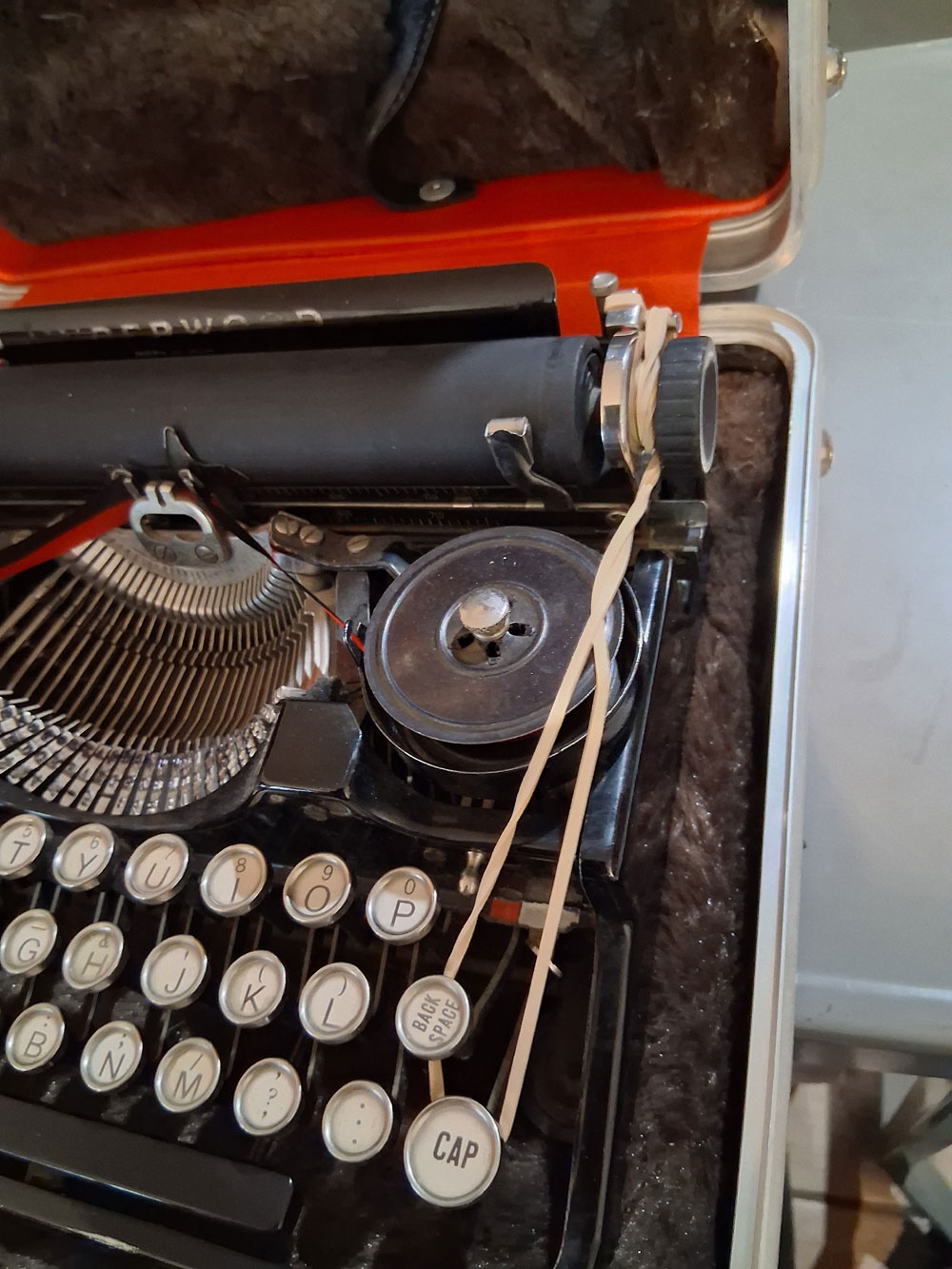 Stuff a sock in the typebasket, close it all up and rest confident that your machine is safe for rough travel! (:
Stuff a sock in the typebasket, close it all up and rest confident that your machine is safe for rough travel! (: 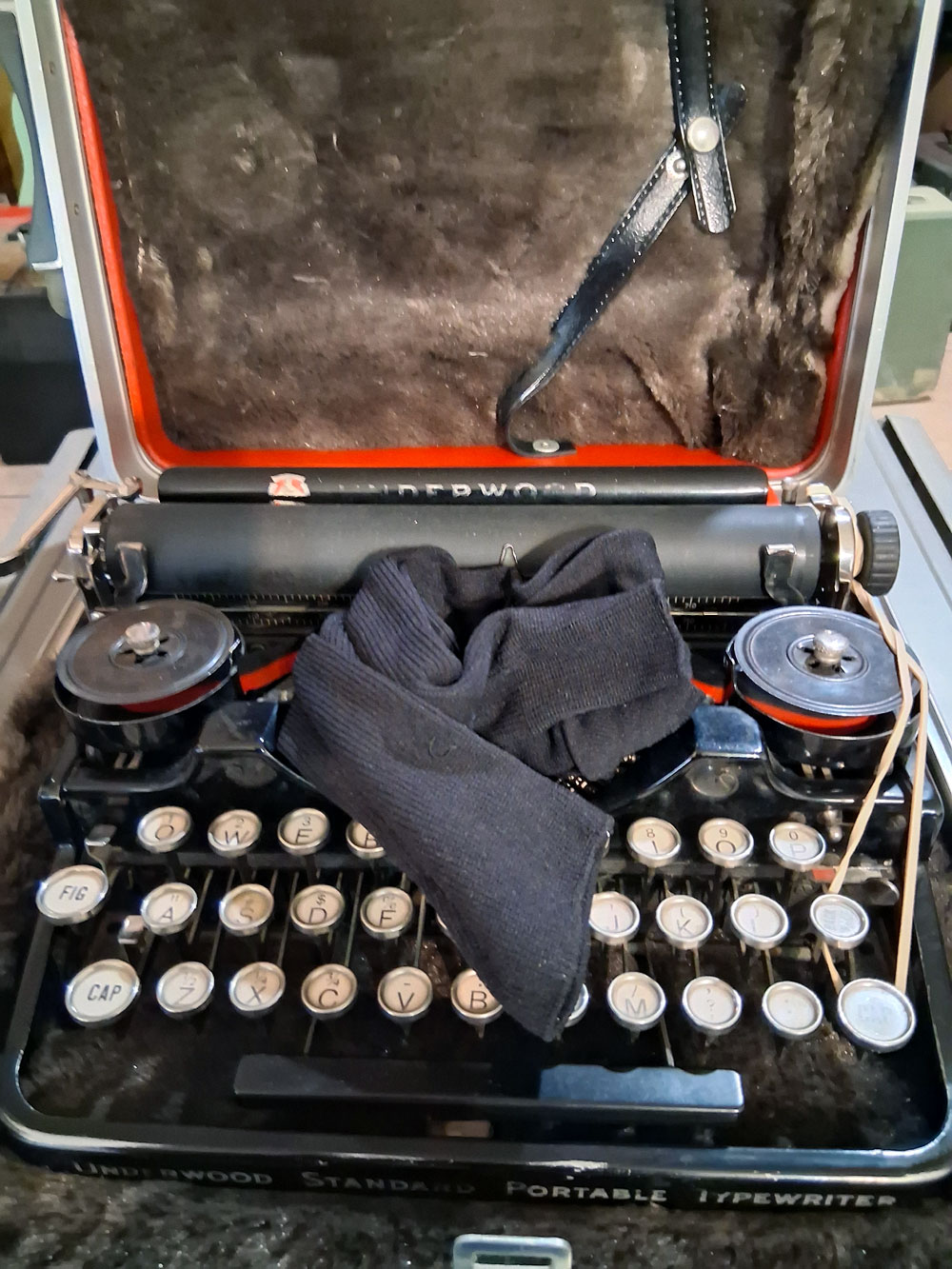
Question: Suppose the typewriter your packing doesn’t have a carrage lock, like my Smith Corona Sterling – How do you go about packing it?
I knew you had a good few typewriters, but good grief, Half a Hundred!?
With the margins? If margins work like I think (but I just bought my first typewriter so I’m no expert), if both the right and left margins are set more or less at the same place, the carriage will be locked.
There is usually a certain amount of movement that happens even with that, but it’s a good secondary measure.
Well, I had that problem with my 1933 Monarch (Remington Portable 1), which has neither a carriage lock nor a right margin stop. All you can do then is tie down the carriage release, then hold the carriage centered by hand while putting the cover back on. The important bit is to keep the rack off the escapement.
Thank you, Ted! And wishing you much good fortune for your move.
What a great lesson in carefully packing up a typewriter! I wish you, your lovely wife, and your typewriters very safe travels!
Love that furry case for the li’l Underwood! Happy trails to cooler climes.
Safe travels 🙏
I had a similar problem when I moved to MI. I packed all of mine like they were being shipped by a common carrier, immobilized the carriage with the margin stops, wrapped the carriage and entire machine in plastic wrap after securing the carriage shift so the basket could not move up or down (shift locks do not work in shipping), Oh, before wrapping the machines I stuffed whatever I could find to use to fill the void in the basket like you did socks, I then padded around the typewriters to fill voids in the cases, and finally spent a fortune on good bubble wrap (not the typical hardware or Wallyworld kind) like I use to ship typewriters, and packed one or to to a heavy duty shipping box which included making my own boxes out of over sized boxes to fit special machines.
I transported my Olivers, also packed myself. Took me about a month to do about 125 typewriters. One got lost my the movers. It did anger me, but it had a twin.
I’m moving a mile and a half to the next neighborhood in a couple weeks. I’m pretending I’m taking typewriters to a very large type-in. But I’m saving this article for two years from now when we hope to make our final move….84 machines.
Here’s the proper way to move typewriters.
I knew this video existed. I had to find it.
Oh, that’s Georg! Look how young he was! :D
Yes, I remember when he posted it on his blog at least 10 years ago.
There’s another part also. I only wish all my machines would have marched themselves from FL to MI like those on his video.
Oh, if you go to CT your first purchase after settling in may be a snowblower.
So, across the country? Where are you going to?
Don’t know for sure yet, but prolly CT.
Well, poop! Didn’t even get a chance to see your collection!
https://typewriterdatabase.com/typewriters.php?hunter_search=4
I hope your move goes just as well as it possibly can. Relief from triple-digit heat will be a blessing. This was an instructive post on packing for such a trip: there were a couple of thing I wouldn’t have considered.
I also heard you can Saranwrap it as well to help prevent movement.
And this is how all of Ted’s typewriters smell like his feet!